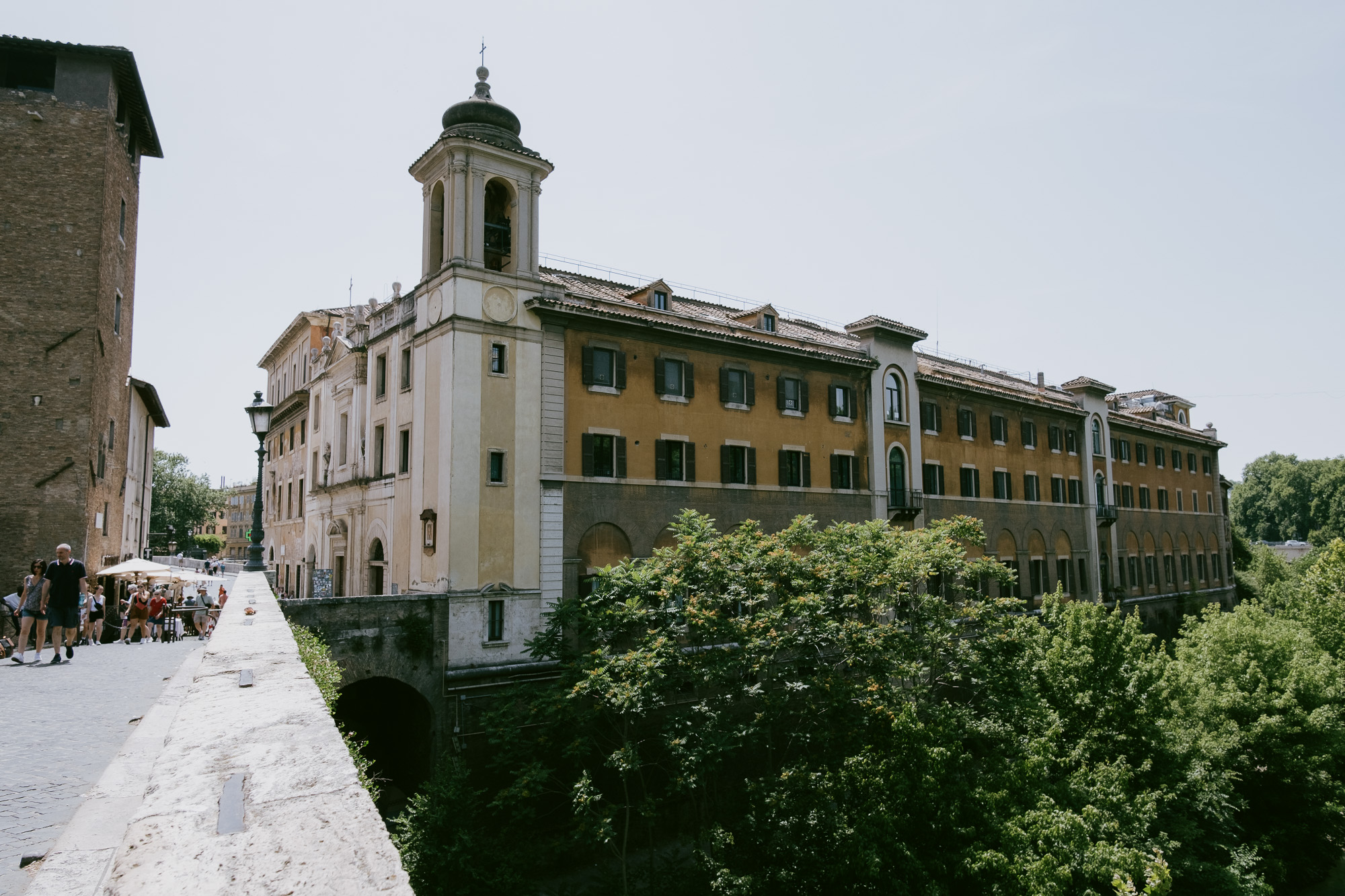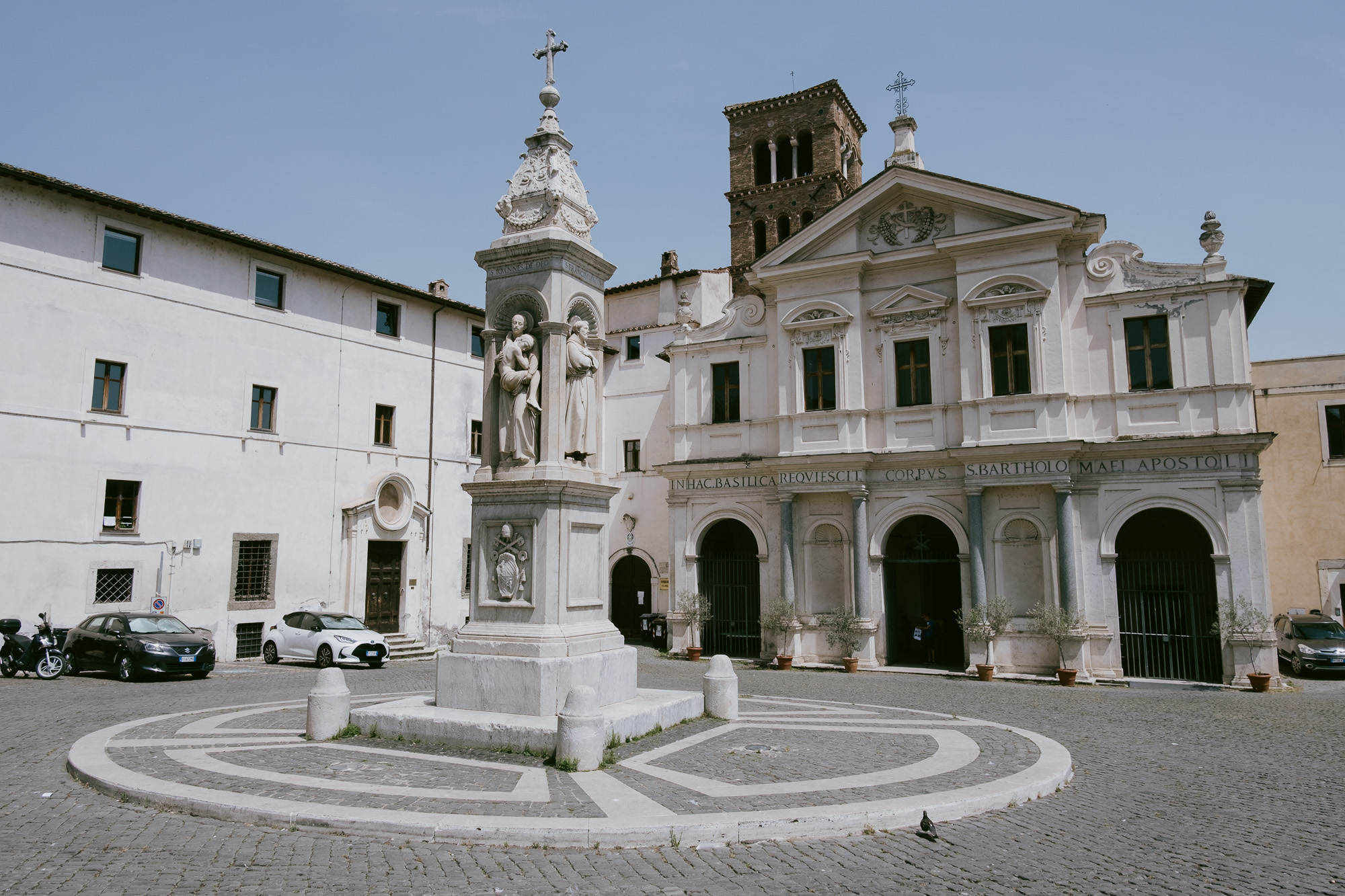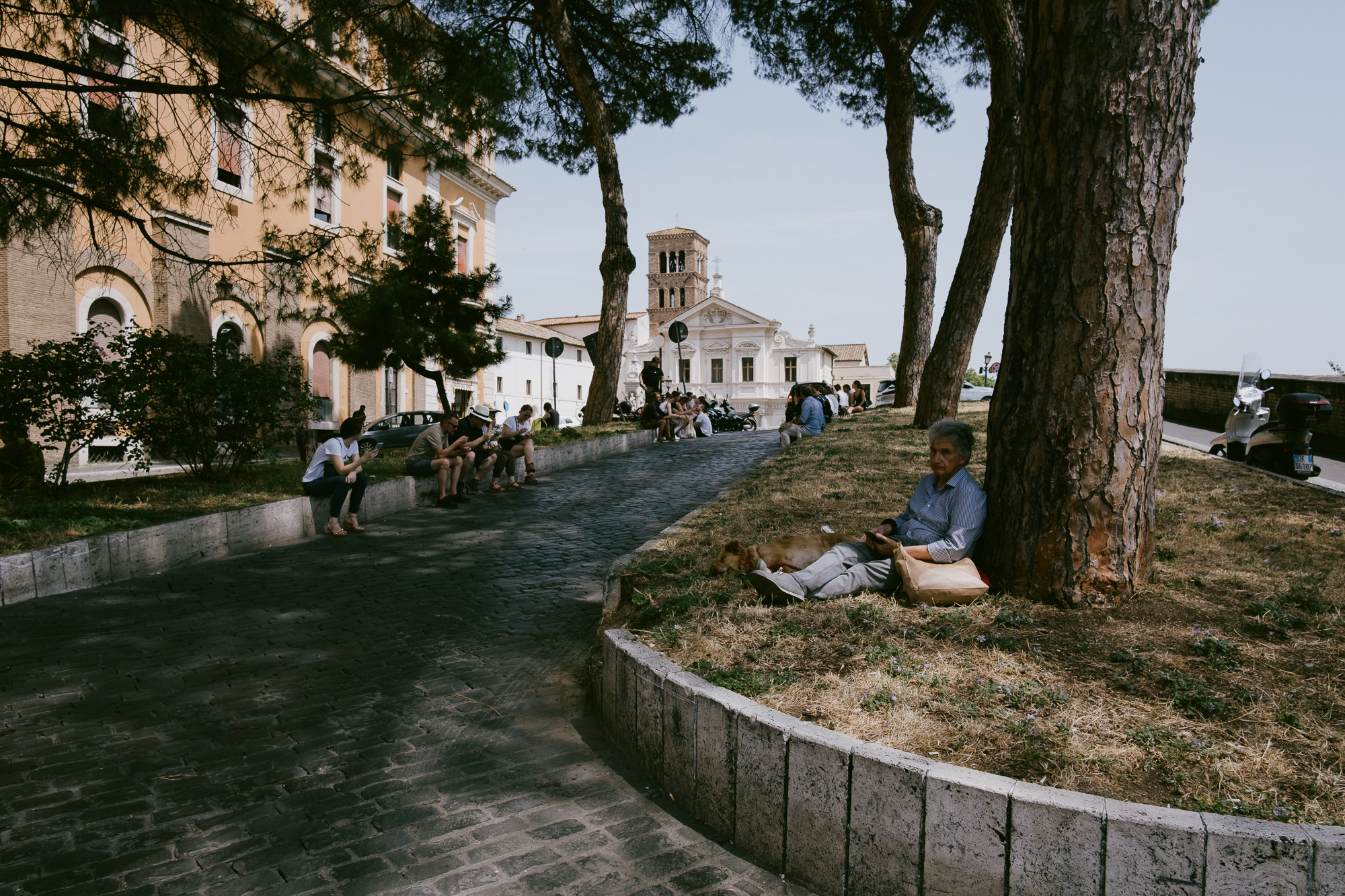In the third century BCE, Rome was struck by a plague. It was decided that a temple should be built to Aesculapius, the Greek god of medicine and healing. A delegation was sent to Epidauros to obtain a statue of Aesculapius and a snake, a symbol of the deity’s power. The legend has it that the snake slithered off the ship and onto the island, and hence the temple was built there.
The island naturally resembles a ship, but stone embankments were added in the first century CE in order to make it more closely resemble one, and a stone obelisk was erected that resembles a mast. This was in honour of the ship that had originally set out in the founding of the temple.
The island has continued to play a medical role ever since ancient times, and is now home to the Ospedale San Giovanni Calibita Fatebenefratelli.
In World War II, the hospital was used to hide Jews from the Nazis during the raid on the Jewish ghetto. Dr. Giovanni Borromeo, the head of the hospital, invented a fictional disease – “Syndrome K” – and claimed there had been an outbreak; the Nazis refrained from searching the hospital, and perhaps 100 Jews were saved as a result. Borromeo was later recognised as Righteous Among the Nations by Yad Vashem.


